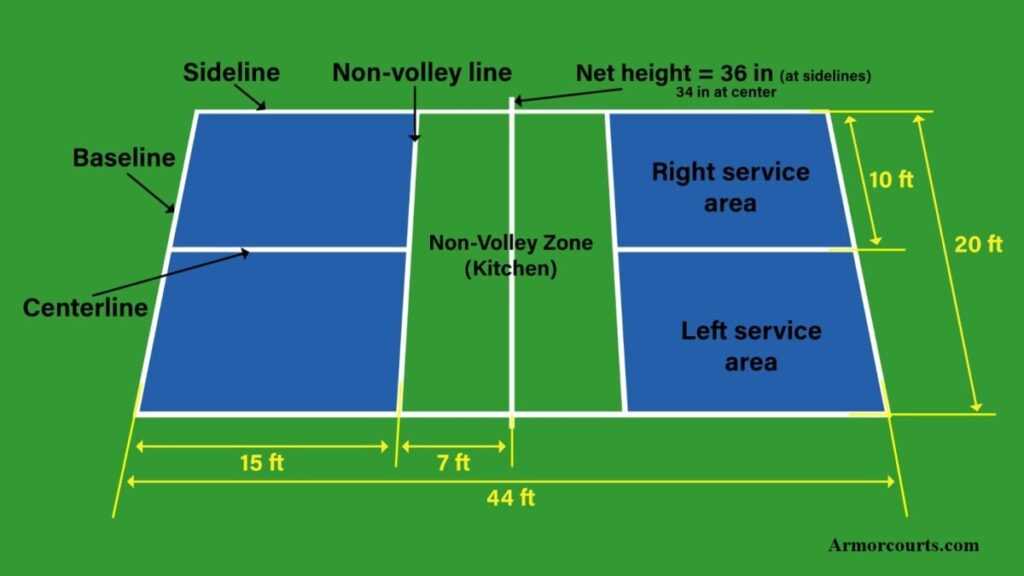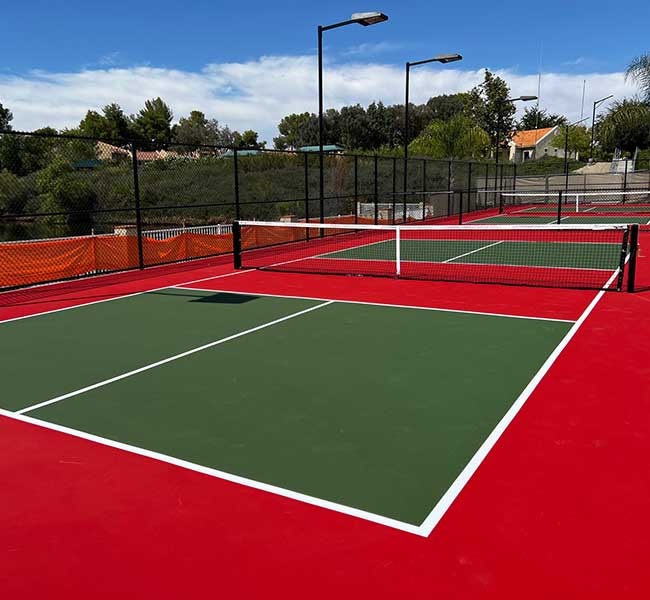Professional Pickleball Court Construction-- From Layout to Installation
Professional Pickleball Court Construction-- From Layout to Installation
Blog Article
Lasting Practices in Pickleball Court Construction You Ought To Know
As the popularity of pickleball proceeds to increase, so also does the requirement for lasting practices in court building and construction. The impact of these techniques expands far past the court itself.
Picking Eco-Friendly Materials
Selecting green materials is a crucial action in the building of lasting pickleball courts. The choice of sustainable products not only decreases ecological impact however likewise enhances the durability and performance of the court. Secret products include reused rubber for the surface, which supplies exceptional resilience and shock absorption while diverting waste from garbage dumps.
Furthermore, making use of locally sourced products decreases transportation exhausts and supports regional economic climates. Pickleball court construction. For example, making use of native hardwoods for fence and seats can offer a sustainable visual while making certain resilience versus the elements.
Incorporating permeable products for court structures can better add to sustainability by enabling for all-natural water drainage and reducing runoff. These options not just protect local ecosystems but additionally promote much healthier play environments.
Efficient Drain Solutions
While the selection of environmentally friendly materials is essential, carrying out effective drainage solutions is just as crucial for keeping sustainable pickleball courts. Appropriate water drainage not just secures the court surface area from water damage yet also lessens erosion and overflow, advertising environmental honesty.
Effective drainage systems can include permeable paving, which permits water to penetrate the ground instead of merging on the surface. This reduces the chance of standing water, which can result in mold and various other maintenance concerns. Furthermore, integrating tactically put drainage networks and swales can direct excess water away from the court location, making certain a dry playing surface and protecting against soil disintegration.
Making use of indigenous plant life in the landscaping around the courts can better improve water drainage by taking in excess water and lowering drainage. These plants require less watering and advertise biodiversity, lining up with sustainable practices.
Moreover, it is vital to regularly keep the drainage system to ensure its long-lasting effectiveness. This includes clearing up particles and surveillance for clogs. By prioritizing reliable drain solutions, pickleball court fabricators can dramatically add to the sustainability and longevity of the facility, ultimately profiting both players and the atmosphere.
Energy-Efficient Illumination Options
As the demand for pickleball proceeds to grow, incorporating energy-efficient illumination choices into court style has come to be progressively vital for sustainability. Standard illumination systems typically consume excessive energy, adding to higher operational prices and ecological effect. As a result, embracing modern, energy-efficient innovations is essential for both new constructions and remodellings.
LED (Light Emitting Diode) lighting sticks out as a leading selection because of its long life and energy financial savings (Pickleball court construction). Compared to conventional lighting, LEDs utilize roughly 75% less energy and can last up to 25 times much longer, considerably lowering maintenance expenses. In addition, the directional nature of LED illumination lessens light contamination, guaranteeing that lighting is focused on the court as opposed to bordering locations.

Lasting Surface Alternatives
Checking out sustainable surface area choices for pickleball courts has actually obtained traction amongst players and building contractors alike. The emphasis on environment-friendly materials not only straightens with the growing ecological awareness yet likewise enhances the efficiency and toughness of the courts.
One prominent option is using recycled rubber, which can be sourced from used tires. This product provides exceptional shock absorption, reducing the danger of injuries for gamers while advertising sustainability. Additionally, modular ceramic tiles made from recycled plastics supply another sensible option. These floor tiles are easy to set up and replace, and their flexibility enables numerous court configurations.
Natural grass courts are additionally arising as a lasting selection, advertising biodiversity and lowering the warmth island effect. Nevertheless, they require normal maintenance and water, which might not straighten with all sustainability objectives.

Water Conservation Strategies

An additional effective technique involves the installment of rainwater harvesting systems. These systems store and accumulate rain for usage in preserving court check this surfaces and landscape design. This Learn More Here technique not just preserves potable water however additionally minimizes reliance on local sources.
In addition, utilizing drought-resistant landscape design around the courts is important. Indigenous plants call for less water and are better adjusted to neighborhood climate conditions, therefore decreasing general water intake. Additionally, using efficient watering systems, such as drip irrigation, makes certain that water is provided straight to plant roots, minimizing evaporation and waste.
Final Thought
Including sustainable techniques in pickleball court construction substantially adds to environmental conservation and source efficiency. Using green materials, carrying out effective water drainage options, and adopting energy-efficient lights choices can greatly reduce eco-friendly effect. Discovering lasting surface area options and using water conservation strategies enhance the general sustainability of these entertainment facilities. By prioritizing these practices, the building and construction of pickleball courts can align with more comprehensive environmental goals while promoting long life and performance within areas.
As the popularity of pickleball proceeds to increase, so also does the need for sustainable practices in court construction.Choosing environment-friendly products is an important step in the building and construction of sustainable pickleball courts. By prioritizing energy-efficient lights choices, pickleball court fitters can add to a much more sustainable future while fulfilling the requirements of players and stakeholders alike.Incorporating lasting surface options not only improves the performance of visit the site pickleball courts yet likewise paves the method for executing reliable water preservation techniques.Including lasting methods in pickleball court building and construction considerably contributes to environmental conservation and source effectiveness.
Report this page